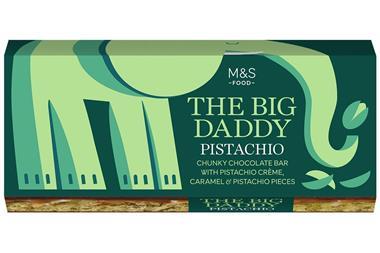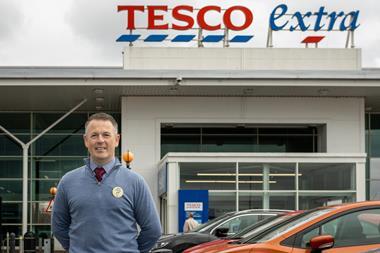Supermarkets and retailers are flocking to Meta’s new app Threads. Is there value in rushing to join the so-called ‘Twitter killer’ or is it merely a case of FOMO? And should their approach be the same as any other social media platform? Or does it demand a different way to enage with users?
The Grocer asks social media and marketing experts for their take…
G Bansal, co-founder and creative strategy director of One Twelve Agency says:

”Brands are scrambling to join Threads due to a mix of FOMO and concern they will be left behind if they don’t jump on the bandwagon. It’s easy to join, especially if you have an existing Instagram account, which many supermarket brands already do. Existing Instagram followers can be translated, so there’s no need to worry about building a following and starting from scratch.
“Joining now is a good plan, because those followers will be paying extra attention to Threads – organic reach always peaks for the latest shiny new thing. So, it’s a great way to engage with people who might be bored of Twitter or are excited about a new platform.
“Brands can afford to experiment on Threads, using a test and learn approach without thinking too deeply about strategy just yet. To get noticed, they can be playful, although they shouldn’t forget to stick to their established tone of voice for consistency. Everyone is new to Threads, so they can explore and gain inspiration at the same time. Brands like Glossier, for example, seem to be having fun without taking it too seriously. More playful supermarket brands should have the edge here.”
It’s a low-risk playground
Lloyd Williams, head of strategy at Socially Powerful says:

“Doing your weekly food shop is something the vast majority of people can relate to, so British supermarket brands tend to play an accessible ‘voice of the people’ character through organic social media.
“Like Twitter, Threads is providing a perfect, low-risk playground for brands to comment on news and trends and engage in light-hearted conversations with their customers.
“Twitter quickly fell into being a customer service channel for many brands, however, as it was the most frictionless way for people to complain.
“But right now Threads is a fresh, positive place to be and supermarket social media managers are having fun exploring it. Brands should try to keep it that way for as long as possible.
“In terms of strategy, as we’ve seen with marketing on TikTok, what works for brands is being true to yourself, having the humility to laugh at yourself and having a flexible strategy that allows you the space to comment on cultural affairs. You can apply that approach to Threads – for the time being at least.’’
Threads and Twitter are not the same
Ben Robbins, head of strategy at S:E Creative Studios says:

“So far, supermarkets using Threads seem to be treating it exactly like Twitter – using humour such as memes to personify themselves and talk to other brands. But Threads and Twitter are not the same.
“Threads is born from Instagram, so quality photo content could have a bigger part to play. For example, it boasts a multimedia carousel feature – unlike Twitter. The combination of great photo content and text threads could create interesting opportunities for users who prefer to share and discuss image-based content rather than text-based content.
“Imagine a thread of recipe images with people sharing and adding their own imagery and thoughts as they try out the original recipe. This happens already on Twitter, but it could go further on Threads as the current user base has mainly come from Instagram.
“As a new platform, Threads is unproven and developing. For now, for brands considering posting on the app, a test and learn strategy is best.”
Hold off investing significant time on Threads
Mara Dettmann, digital strategy & content lead at BBH says:

“The eyes of the marketing world are on Threads. Given the low barrier to join, brands have nothing to lose by setting up their Threads profile. However, while Threads is still at such an early stage (and especially given its limited discoverability), I’d recommend brands hold off investing significant energies into posting much content on the platform at this point.
“I’d also very much advise against brands applying their Twitter strategy to Threads: despite overlap in their functionalities and the niches they occupy, Threads is already different. It’s a much more positive, and generally more casual place than Twitter. So first, take a good look at how people are using Threads. Then think about how you can establish a meaningful presence with people who genuinely want to engage. Above all, stay true to your brand.”
A business won’t be mocked for abstaining from Threads
James Kirkham, CEO of Iconic says:

”Like any other new social platform, brands have a tendency to leap on board so they’re not the last to the party. But we’ve evolved past the era of brands producing funny reactive moments.
“Natural selection led us through a time where brands used micro-blogging environments as a go-to customer service channel, into a much more broadcast medium – a vehicle as valuable showing the latest TVC as much as any actual copy writing, as was originally intended by Twitter and the likes.
“So, we’re in a different time entirely.
“Users will not mock a brand for not being on the platform. That sort of pressure is entirely down to the brand team, and should perhaps be a signal for supermarkets and brands to curb their enthusiasm.
“In fact, users of Threads remarking on the feeling of space and the purity of the social dialogue, are likely just as happy not to be engulfed by brands. Certainly, the lack of advertising in this early version of the platform is being welcomed.
“If brands and supermarkets can respect such ethos and spirit, they’d be able to join seamlessly, as long as they can ascertain what value they bring. We’re well past the era of multi-person teams sat in company ‘war rooms’ trying to invest funny copy on behalf of the brand to ‘explode’ on Threads.
“There’s no call for that, and the current users enjoying their new-found platform freedom would ruthlessly filter it out.
“Threads is proving to be one of the most successful launches of all time in technology, not just in social. That’s because of the power base of users from Instagram. You effectively have a ready-made community straight out of the Meta stable to work with, albeit turning Instagram behaviours over to the written word.
“Brands and supermarkets should stop and think if they really need to be a part of it. If they do, does their strategy feel in keeping with the spacious, lighter environment the platform seems to perpetuate right now?”
Brands should use Threads to test and learn
Sarah Jardine, social strategy lead at Wunderman Thompson UK says:

“Brands will always feel like they’re missing out if they’re not a part of the conversation, and Threads is the conversation right now. Nobody wants to be the last at the party.
“Getting on Threads early means you can set the agenda for your brand, test what works without the same judgement as other channels and develop your brand’s social TOV. In the last week, over one hundred million people have already signed up – so consumers are there if they want to play in the space.
“Pretty Little Thing and Wendy’s jumped onto the platform immediately, and for more conversational brands, it really is a no-brainer.
“On Threads you can get immediate customer feedback and ask questions you can’t on other platforms. Consumers are more likely to contribute their inner thoughts and feelings as it’s a new app – it feels like a safe and non-judgemental platform currently, without the dramas of Twitter. No social strategy should be a direct mimic of another channel. We must remember the followers on Threads are often directly linked to Instagram, so this is something to keep in mind.
“We don’t know the future of Threads, but it allows brands to put a test and learn approach into practice and you don’t have to worry about getting it perfect – and the great thing is everyone is new on there too.”
You must avoid the pitfalls of Threads
Pete Sayburn, CEO at Studiospace says:

“Now is a perfect opportunity for brands to test and learn about Threads while it’s still new. But there are some pitfalls to be avoided. Lots of people are claiming to be Threads experts, but it’s early days and not the case.
“Currently, it feels like a vicar’s tea party. Everyone is playing nice at the moment, perhaps trying to avoid creating another negative echo chamber as some feel Twitter has become.
“The best strategy we’ve seen is brands testing and learning, trying different types of content and seeing what works and what doesn’t. Be agile and start experimenting and growing now while there are no ads, and you’re likely to build an audience really quickly.
“But the key is to work with the app. Many brands are using Threads like Instagram or simply reposting their Instagram content, and this doesn’t seem to be where most engagement is.
“Some are falling down the trap of the trend of posting ‘motivational quotes’ – it’s been done and it doesn’t come across as very authentic or genuine.
“Many brands that have done very well on TikTok are doing well on Threads already. For example, Ryanair, Netflix and Aldi. These brands are posting light-hearted content, mainly memes, and are also reacting in the moment.
“Others are actually using social media to be social. This is the chance to connect with your audience and have lots of conversations, as everyone is spending lots of time on this app.”




















No comments yet